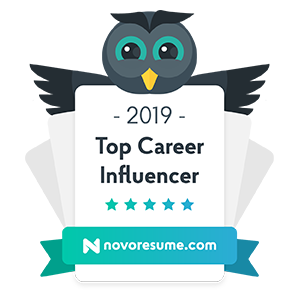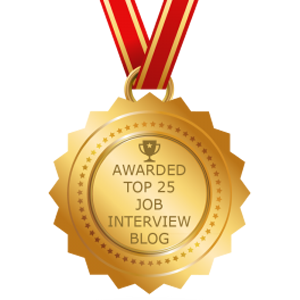Updated: March, 2021
If you’re like most career-focused professionals, you have a LinkedIn profile to compliment your resume and cover letter. You may even think your LinkedIn profile is actually pretty good. However, don’t be fooled by the bells and whistles of this career platform. Just having a LinkedIn profile is not enough when you consider the 700+ million other members – all vying for career success. You must have a specific strategy around profile optimization in order to really be sure you are standing out and making the most of your Linkedin presence. In this blog post we will explain the LinkedIn traps that are preventing you from reaching full LinkedIn optimization and success!
1. LinkedIn is overly user-friendly, creating less motivation for the user
User-friendly is the way to go if you’re trying to attract and engage a ton of people on your website. This is one of the things LinkedIn does really well. If you’ve been on LinkedIn for a while you know that the profile set-up is as simple as a few clicks. However, this can be a double-edged sword if you’re one of those people who just follows the prompts in order to achieve quick profile set-up. The same goes for you if haven’t tweaked your profile to your target new brand, with each career move.
While it may be easy to click the “save” button and walk away, it’s worth spending some time knowing exactly what is needed to be optimized on LinkedIn instead of breezing through and potentially missing some key tricks of the trade like SEO, keywords and brand positioning.
2. LinkedIn has the potential to become a major job search distraction
LinkedIn also does a great job of providing a lot of interesting information such as content & stats (profile views, profile rank, etc.). All of these stats are very interesting (and LinkedIn knows this). However, when it comes to your job search, this extra information may serve to be more of a distraction than anything else. It’s one thing to use information and data to find new job opening leads. It’s entirely another to dwell on who and how many people viewed your profile. The latter won’t make a bit of difference in your job search. Make a point of doing what you are there to do and then leave to focus on the next task from your job search “to do” list. Whatever you do: DO NOT get sucked into LinkedIn for 8 hours a day! Your LinkedIn efforts will become counterproductive after even a few short hours online.
3. LinkedIn may turn you into a victim of inertia
Internet surfing across multiple tabs and devices at once has become par for the course, making each one of us susceptible to constant distraction. I can’t tell you how many times I’ve been on LinkedIn for a specific purpose but am then drawn away by someone’s profile or post instead of accomplishing what I set out to do. This makes strategy even more important. Set aside time to do your LinkedIn stalking and stat checking outside of your dedicated LinkedIn job search/networking time to avoid any unnecessary time wasters.
4. Don’t approach LinkedIn without a specific strategy
Inertia and distractions are 2 strikes against you if you don’t have a solid strategy in place for your job search. Since LinkedIn exists for a number of different purposes, it’s important to nail down exactly why you are there and what you hope to achieve before each visit. In the job search you’ll want to decide if you are going there for networking, research, application submission or to generate industry visibility. Really know why you are there and stick to your plan of attack. This will have you producing more results than aimlessly wandering and hoping to land on the right opportunity or contact.
5. If you don’t understand how LinkedIn ranks you, you won’t rank high
LinkedIn exists for two purposes: to find and to be found (think Google). Being found is just as important as having the right strategy for finding new contacts or jobs, especially among the 700 million other people. However most people unknowingly miss this critical part of career management strategy. LinkedIn takes into account your 1st, 2nd and 3rd degree connections as well as any common factors (like groups) when returning your profile in search results. Therefore it’s to your benefit to be connecting to as many people as possible (even strangers)!
4. LinkedIn requires basic knowledge of SEO
I can’t talk about being found online without touching on SEO (search engine optimization). Check out this blog post to learn more about what SEO is and how it works on Linkedin. Think of Linkedin as your own mini-website. It’s valuable web real estate and it should be treated accordingly. If you’re hoping to be found for a new job, this is one area you should be relatively familiar with so you can apply the correct strategies for appearing in more searches. This will help your job search work double-time.
5. LinkedIn searching & results are only as effective as your keyword strategy
Similar to SEO, you have no chance at being successful online without knowing keyword basics. When you’re searching for anything online, your results will only be as good as the keywords you type into the search bar. Same goes for being found. If you want to be found, you must be thinking in terms of what your target audience might be typing into the search bar to find you. Find a way to incorporate all of these words into your profile. If you’re not sure about keywords, you might want to check out this post on keyword strategy in the online job search.
If you’re hoping to improve your LinkedIn strategy and land a job in record time, check out the Job Search Accelerator. In this budget-friendly job landing community you’ll have access to all of Noelle’s expert resources including a FREE resume review, optimized resume and cover letter templates, networking scripts and templates, LinkedIn optimization courses, interview answer scripts and more – everything you need to feel confident, navigate the job search successfully, and put your best foot forward as an applicant.


 Is Your Linkedin Profile Working for You?
Is Your Linkedin Profile Working for You?


